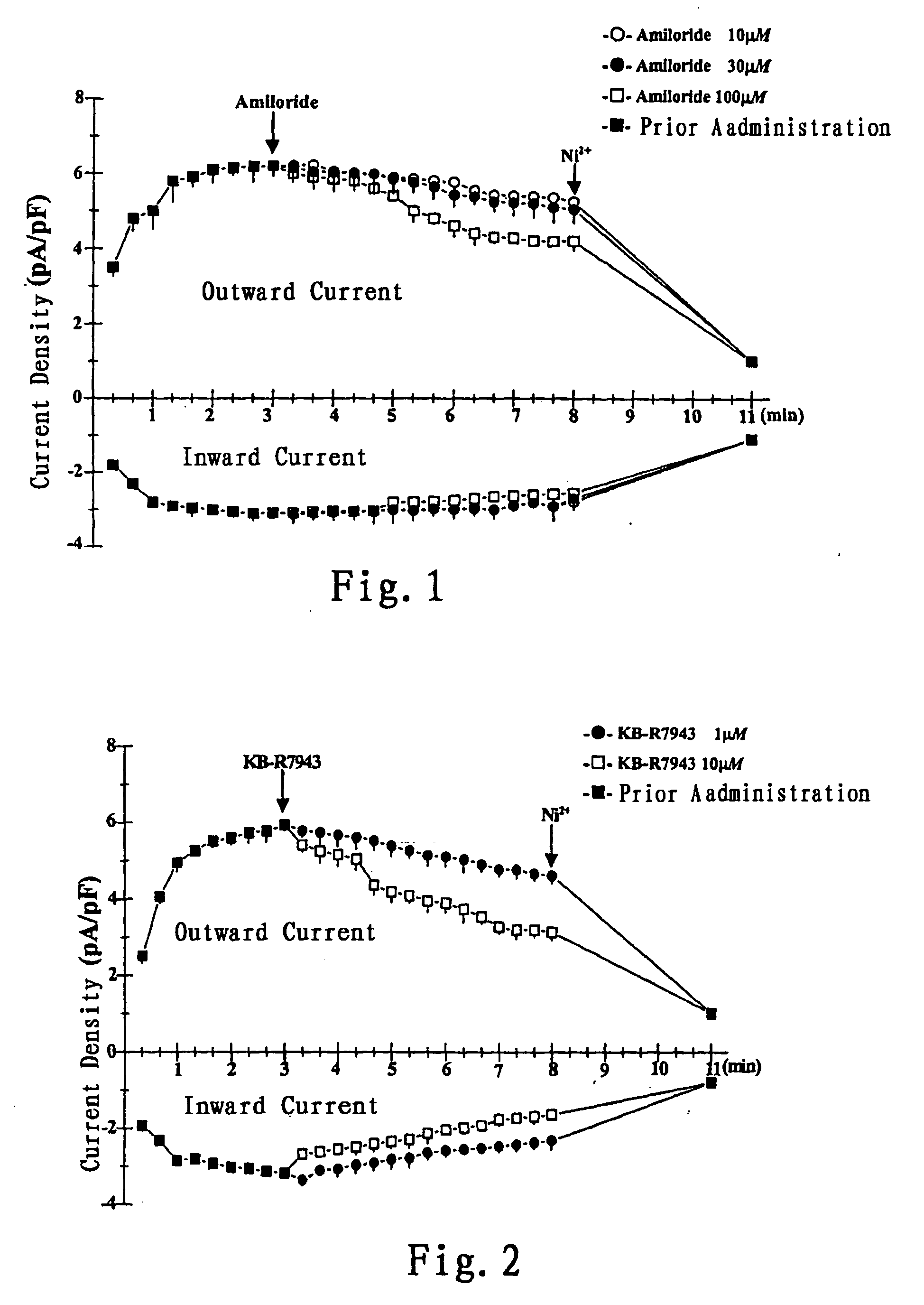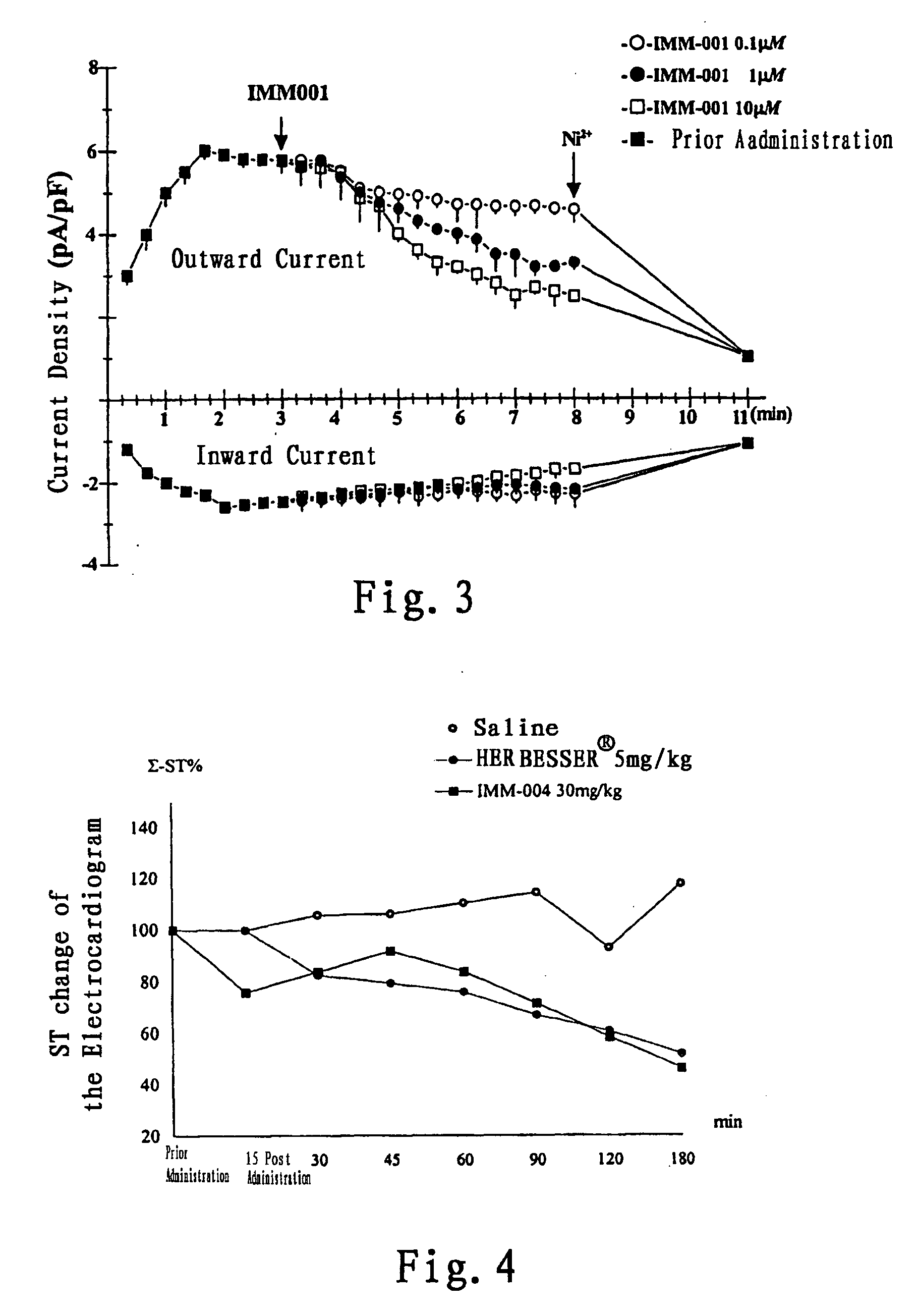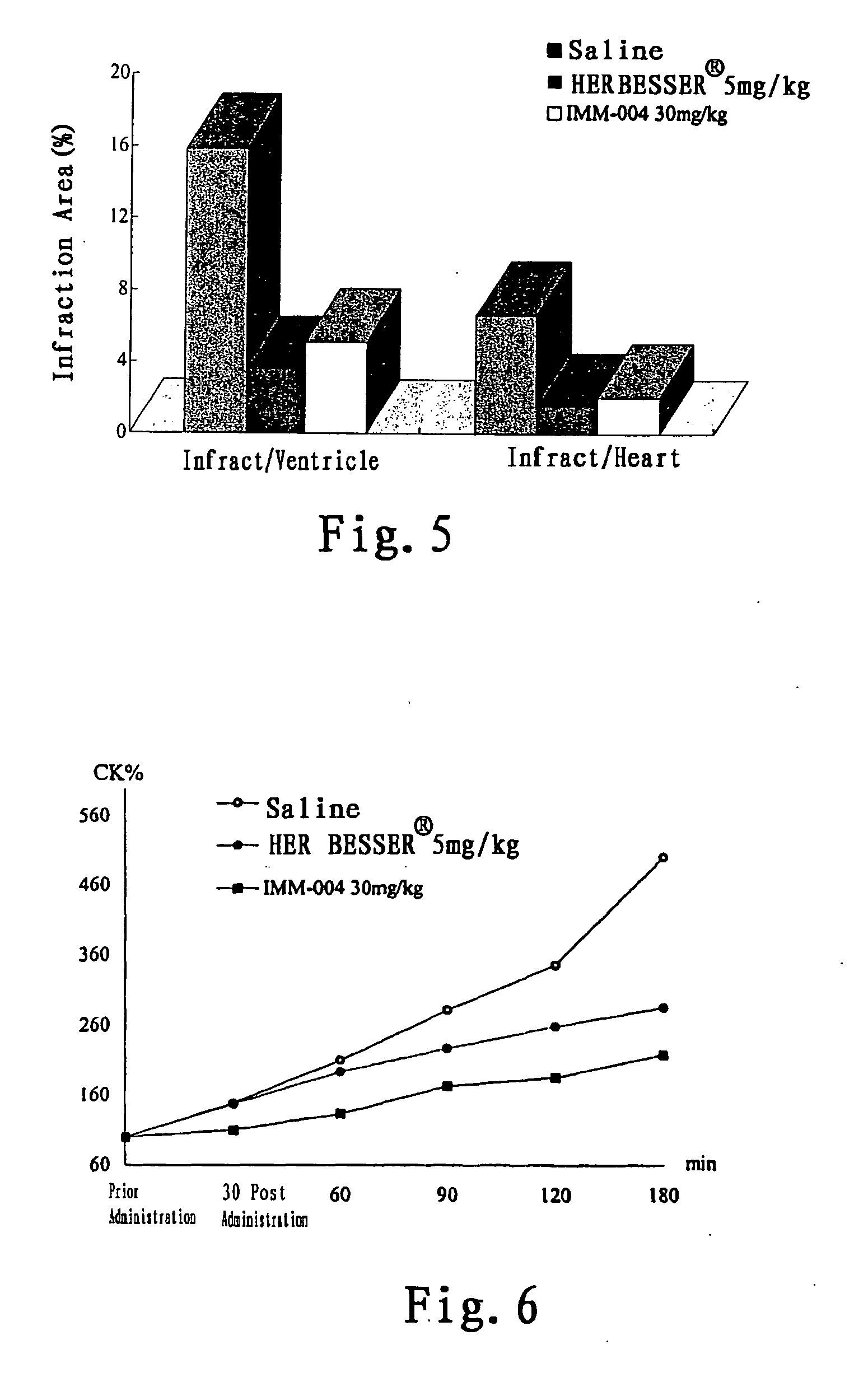Use of benzisoselenazolone compounds against ischemic myocardial damage
a technology of benzisoselenazolone and compound, which is applied in the field of use of benzisoselenazolone, can solve the problems of reducing the incidence and duration of vt, and restricting the use of clinically available drugs,
- Summary
- Abstract
- Description
- Claims
- Application Information
AI Technical Summary
Benefits of technology
Problems solved by technology
Method used
Image
Examples
example 1
In Vitro Studies
(1) Inhibitory Effect of the Invented Compound on Na+ / Ca2+ Exchange Current in Myocardial Cell
[0263] Effects of above compounds on inward and outward Na+ / Ca2+ exchange currents were evaluated. The tested compounds demonstrate certain inhibitory effect on reverse mode of Na / Ca exchange process. The inhibitory ratio of compounds on Na+ / Ca2+ exchange current is higher than 40%; the inhibitory ratio of the most potent one is over 60%. (See table below)
Inhibitory rate ofInhibitory rate ofCompoundoutward INa—Ca (%)inward INa—Ca (%)IMM-0655543IMM-3135028IMM-0045244IMM-1274321IMM-1284442IMM-1295957IMM-1324414
(2) Protective Effect of the Compounds on Isolated Heart Subjected to Ischemia / Reperfusion Injury
[0264] On the basis of above screening results obtained from electrophysiological studies, and the result from comparative study on the research of the inhibitory effect of compounds on reverse mode Na+ / Ca2+ exchange process, 7 effective compounds were subjected to in ...
example 2
In Vivo Studies
(1) Protective Effects of the Tested Compounds on Myocardial Insults in Rats after Intravenously Injection
[0266] 1) The protective effect of Verapamil on the recovery of cardiovascular function was examined in rats after intravenous (femoral vein) injection of 0.3 mg / Kg body weight. Incidence of VT, VF, VE and duration of arrhythmic were all reduced, as well as latency of ventricular arrhythmic was significantly prolonged in drug-treated groups.
[0267] 2) The protective effect of IMM-001 on the recovery of cardiovascular function was examined in rats after intravenous (femoral vein) injection of 3 mg / Kg body weight. Incidence of VT, VF, and duration of VT, VE and ventricular arrhythmic were all reduced in drug-treated groups.
[0268] 3) The protective effect of IMM-004 on the recovery of cardiovascular function was examined in rats after intravenous (femoral vein) injection of 3 mg / Kg body weight. Incidence of VT, VF and VE, and duration of VT and VF were all reduce...
example 3
Protective Effects of the Compounds on Myocardial Ischemia in Anesthetized Dogs
[0282] Effects of IMM-04 on acute myocardial ischemia, infarction were observed in dogs. Dogs were treated with IMM-004 via duodenum, and parameters including the severity (Σ-ST) and area (NST) of myocardial ishemia revealed by epicardial electrography, myocardial infarct size represented by N-BT staining method, Coronary flow, oxygen consumption, the activity of CK, LDH, AST in blood, and change of plasm ET, TXB2 and 6-Keto-PGF1 were observed.
[0283] Dogs were divided into three groups: 1, vehicle control group, PEG 1 ml / kg, n=5; 2, dilthiazem group, 5 mg / kg, n=5; 3, IMM-004 group, 30 mg / kg, n=5. The tested drugs were prepared in distilled water at volume of 1 ml / kg. The tested items were administrated via duodenum by animals.
(1) Effects of Compounds on Myocardial Infarction Area and Ischemic Injury Reduction
[0284] 1) Effects of Compounds on Severity of Myocardial Ischemia (Σ-ST)
[0285] No modificati...
PUM
| Property | Measurement | Unit |
|---|---|---|
| weight | aaaaa | aaaaa |
| frequency | aaaaa | aaaaa |
| temperature | aaaaa | aaaaa |
Abstract
Description
Claims
Application Information
 Login to View More
Login to View More - R&D
- Intellectual Property
- Life Sciences
- Materials
- Tech Scout
- Unparalleled Data Quality
- Higher Quality Content
- 60% Fewer Hallucinations
Browse by: Latest US Patents, China's latest patents, Technical Efficacy Thesaurus, Application Domain, Technology Topic, Popular Technical Reports.
© 2025 PatSnap. All rights reserved.Legal|Privacy policy|Modern Slavery Act Transparency Statement|Sitemap|About US| Contact US: help@patsnap.com



